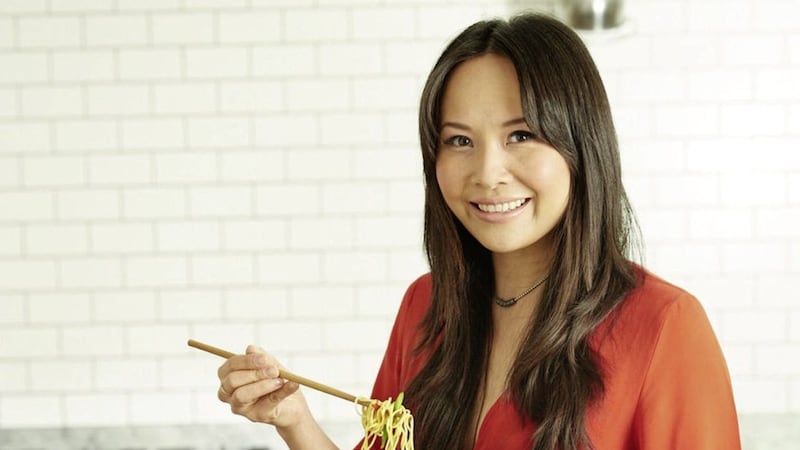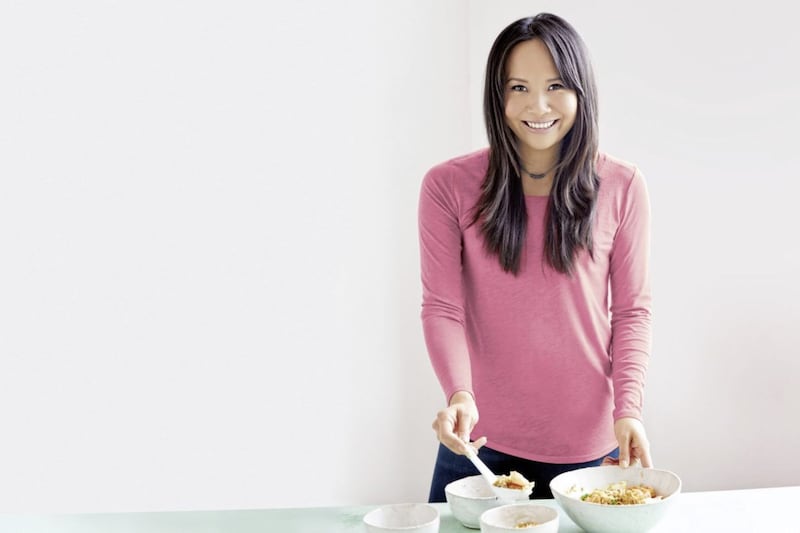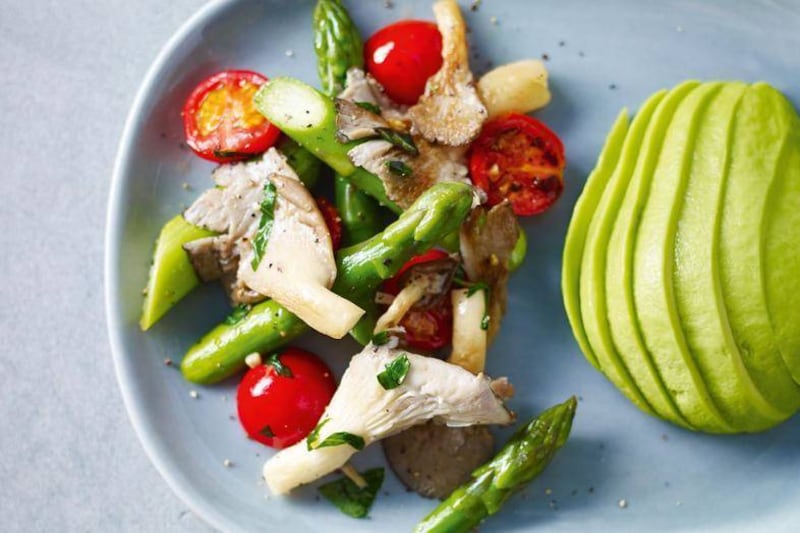HOW many of us have lumped for a supermarket stir-fry mix, complete with sickly packet sauce, dumped it all in a wok, burned the bottom, and wished we'd just ordered in chow mein? We're betting this happens a lot.
But it doesn't have to be that way. In her new cookbook, Stir Crazy, TV chef, foodie entrepreneur and Chinese cookery aficionado Ching-He Huang has come up with 100 stir-fry recipes that won't involve dry, frazzled chicken and limp beansprouts.
"We are living in a fast-paced world and time is of the essence," she says, explaining why our obsession with flash-fried noodles and crunchy veg isn't likely to wane. "They're quick, accessible, speedy and non-threatening – you don't need a lot of fancy kitchen equipment."
However, despite how quick and easy they are, in the West, we're still prone to messing up our stir-fries.
"People add everything in at once and hope for the best, but really, the simple message is that every ingredient needs its time," says Taiwan-born Ching (38). "That's the beauty of stir-frying: you heat the wok up to a really high heat, then you add the oil – when you swish the oil around it creates even heat distribution.
"Then you add garlic, ginger, chillies – the holy trinity – and I always love to add all three, because why not? They need a few seconds, then add your protein or crunchier vegetables, carrots first, then let everything settle and caramelise on one side, saute, then turn and toss to cook; season and serve.
"Every element of that process needs its own time," she says, making rapid-stir frying sound more therapeutic than manic. "Be mindful that having all the ingredients prepped beforehand helps," she adds. "That's where people go wrong, because they think, 'I'll chop and just chuck it in', but if you do that, you burn whatever's in the wok."
It's not just ease and speed that attracts Ching to stir-fries. For the north-London based cookery book writer, it's a dish that offers myriad health benefits, variety, and feeds into sustainability. Half the recipes in Stir Crazy are vegetarian and vegan, and when meat does feature, it makes up no more than 20 per cent of a dish.
"In Chinese restaurants, the majority of the dishes are meat-based, but traditionally in Chinese cooking and culture, it was 80 per cent vegetable based and meat was only a luxury," says Ching, explaining that she wanted to return to those roots. "It's really about the quality of ingredients, not quantity, and you get what you give from the planet. Unfortunately, we're taking a lot more than we're giving [at the moment].
:: Stir Crazy: 100 Deliciously Healthy Stir-fry Recipes by Ching He-Huang, photography by Tamin Jones, is published by Kyle Books, priced £19.99. Below are two recipes from the book for you to try.
AUBERGINES IN A SPICY PEANUT SAUCE
(Serves 2)
1tbsp rapeseed oil, plus 1tsp
300g purple aubergine, sliced into 1cm x 3cm strips
1 red chilli, deseeded and finely sliced
1tbsp Shaohsing rice wine or dry sherry
For the sauce:
1tsp smooth peanut butter
1tbsp chilli bean paste
1tsp sesame paste, such as tahini
2tbsp low-sodium light soy sauce
1tbsp Chinkiang black rice vinegar or balsamic vinegar
1tbsp cornflour
50ml cold water
For the garnish and to serve:
1 spring onion, finely sliced
1tsp toasted sesame seeds
Wheat flour noodles or steamed jasmine rice
Whisk together all the ingredients for the sauce in a jug, then set aside. Heat a wok over a high heat until smoking and add one tablespoon of rapeseed oil. Add the aubergine strips and stir-fry for four to five minutes while adding small drops of water to soften the aubergine - about 100ml in total. As the water evaporates, keep adding more.
Once softened, push the aubergines to one side of the wok and add the second teaspoon of rapeseed oil. Fry the sliced chilli for a few seconds, then season with the Shaohsing rice wine or dry sherry.
Give the sauce a stir, then add to the wok and cook gently, stirring and tossing all the ingredients together until the sauce is heated through and has coated the aubergines - about two minutes. Garnish with the spring onion and toasted sesame seeds and serve immediately with your choice of noodles or rice.
THREE-CUP CHICKEN STIR-FRY
(Serves 2)
250g boneless chicken thighs, sliced into 1cm x 2.5cm cubes
Pinch of sea salt flakes
Pinch of ground white pepper
1tbsp cornflour
1tbsp rapeseed oil
Large knob of fresh root ginger, peeled and cut into large slices
2 garlic cloves, crushed but left whole
1 red chilli, sliced into rings
1tbsp Shaohsing rice wine or dry sherry
50ml low-sodium light soy sauce
50ml toasted sesame oil
1tsp caster sugar
5g Taiwanese nine-pagoda leaf basil or Thai sweet basil
Place the chicken in a bowl, add the salt and ground white pepper and then dust with the cornflour. Mix well to coat then set aside. Heat a wok over a high heat until smoking and add the rapeseed oil. Add the ginger slices and fry until crispy and golden, then add the garlic and red chilli and toss for a few seconds to release their flavour.
Add the chicken pieces and leave for 10 seconds to sear and colour, then flip them over. Season with Shaohsing rice wine or dry sherry and stir-fry for two to three minutes on a high heat until the chicken is almost cooked. Add the light soy sauce, the toasted sesame oil and sugar and cook for five minutes until the liquid has almost evaporated. The chicken should have a dark brown, slightly sticky shine. Add the basil leaves and toss through to wilt, then take off the heat and serve immediately.







